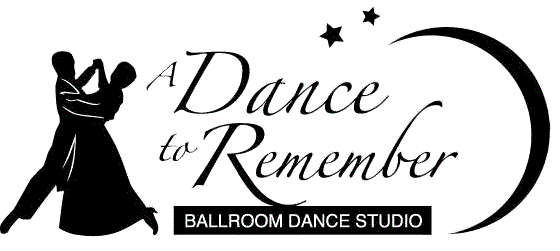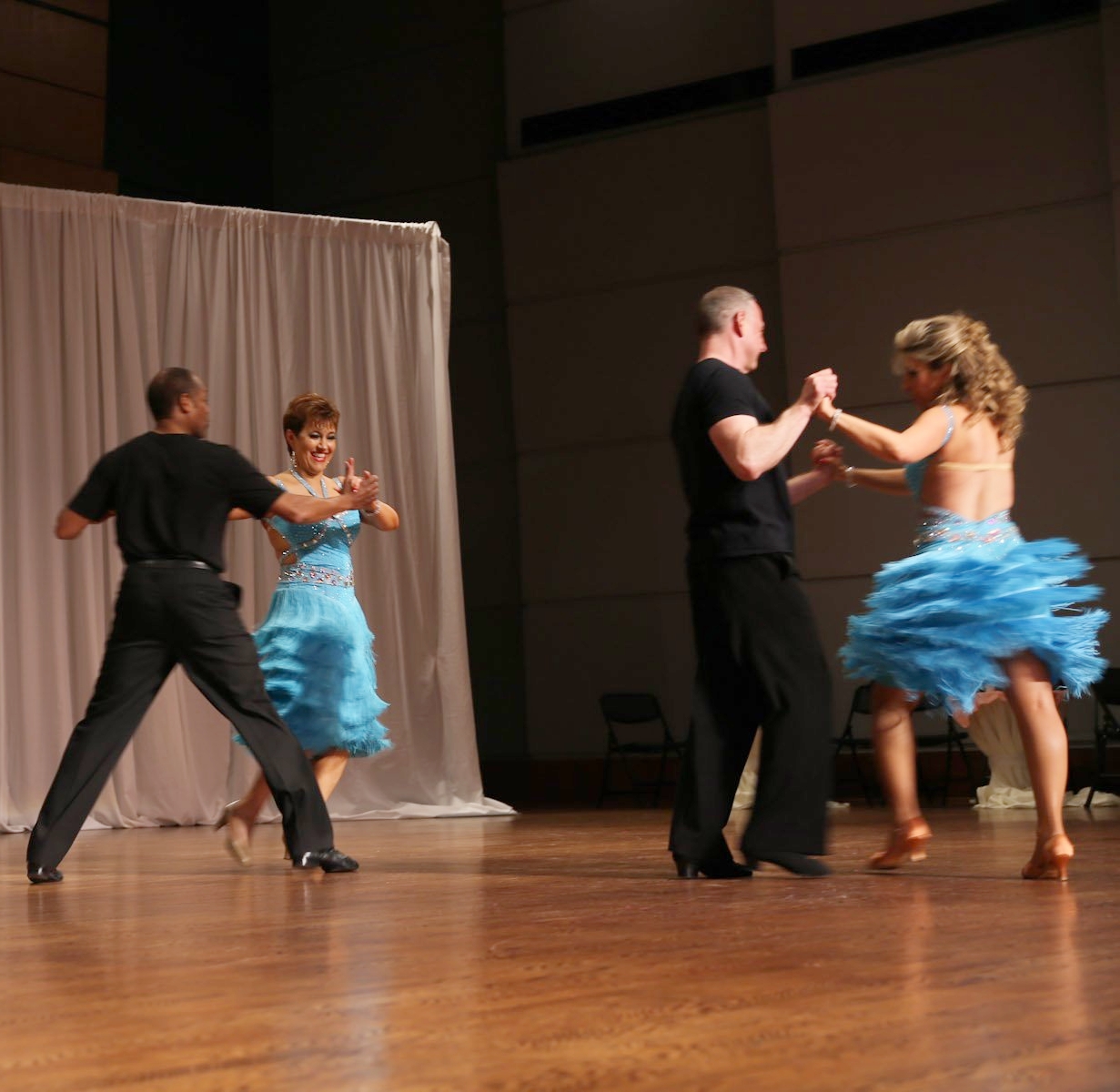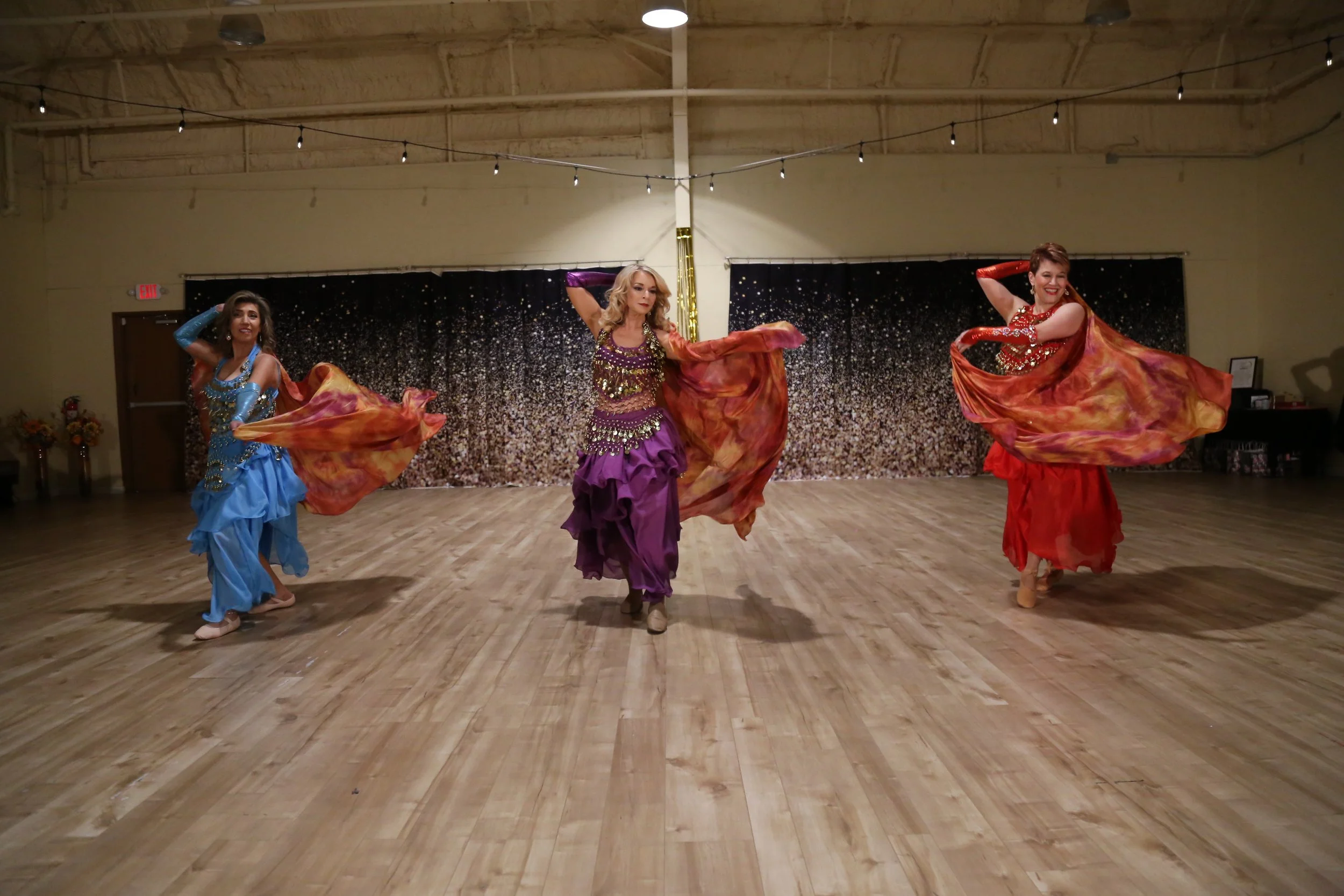The Types of Class You Can Take
There is a number of different styles of Ballroom dance, all with different musical styles, rhythms, holds, and footwork. ADTR group classes change their featured type of dance month to month according to demand, while during private lessons the teacher will instruct you in whatever type of dance you want to learn.
Group classes provide an opportunity for students to meet and connect with others who share similar dance goals. Private lessons offer tailored teaching focusing on the needs of individual students or couples. The ADTR customers have fun improving their overall physical and mental fitness while gaining confidence in their newly acquired skills.
The monthly studio parties are gatherings for students to practice what they have learned during their lessons while enjoying camaraderie among friends. First time guests are always welcome to join our social dances for free!
ADTR also organizes field trips to exciting dance parties in the DFW area. The intent is to encourage students to experience dancing at different venues. The outings promote fellowship and serve as another opportunity to share the love for dancing with similarly minded people.
Our instructors!
International Style Ballroom:
Slow Waltz: Danced in European courts in the mid 1700s, the romantic Slow Waltz is an offspring of the faster Viennese Waltz and is danced in 3/4 time. The speed was gradually slowed down over time as songwriters of ballads and love songs chose to compose in a slower and more comfortable tempo. Waltz continues to rise in popularity at anniversaries, graduations, and weddings.
Tango: The Tango is done in a slightly different manner than other dances. The hold is very different, with the lady's arm under the man's, which creates a tighter hold for a quick staccato action and stylized poses. (Not to be confused with the Argentine Tango.)
Viennese Waltz: The Viennese Waltz is a fast Waltz which originated in Austria. Joseph Lanner and Johann Strauss wrote the first waltzes in the early 19th century. In the middle of the 20th century, the German dance teacher, Paul Krebs, choreographed the Viennese Waltz style to which we dance today. The dance gained a great deal of popularity not only Europe, but also in America, and has been used in many Hollywood productions.
Foxtrot: The Foxtrot is one of the most deceiving dances. It looks very easy, but is one of the most difficult dances to perform. The dance originated in 1913 when a vaudeville performer by the name of Harry Fox performed a little trot which appealed to the social dance teachers in New York and thus the Foxtrot was born. It has gone through many changes since that time, and is now comprised of more soft and fluid linear movements
Quickstep: As the name implies, the Quickstep is a very quick and lively dance, comprised of hops, skips, and kicks. The dance began as a quick version of Foxtrot mixed with the Charleston, and musical "Jazz" influences.
International Style Latin:
Cha Cha: During the 1950s, the Cha Cha was made famous by many Latino bands such as Xavier Cugat and Perz Prado. Cuban in origin, the Cha Cha rhythm is found in much of today's popular music.
Samba: The Samba originated in Brazil and, unlike the other Latin dances that are stationary, it has a traveling action around the floor with lots of spins and controlled bounces.
Rumba: The Rumba is Cuban in origin and is often referred to as the dance of love. Sultry and romantic, the music is a mixture of African and Latin rhythms
Paso Doble: The Paso Doble is a theatrical Spanish dance that characterizes the man as the matador and the lady as his cape Based on Flamenco dancing, the character of the dance is arrogant and passionate.
Jive: The Jive is a very fast. acrobatic and lively dance made popular during the Second World War by the swing music of Benny Goodman, Artie Shaw, Tommy Dorsey and Glen Miller
American Style Smooth:
Foxtrot: The Foxtrot remains the most popular social dance in the world today. Little did Harry Fox realize that his trotting on a New York stage in 1913 would become an overnight success The Foxtrot is the foundation for many of the social dances that followed. It is enjoyed by all age groups for its ease of movement and smooth style. Foxtrot music is played by most social dance orchestras and is one of the easiest dances to learn in the American Style.
Waltz: The Waltz appeared as a fashionable dance in Bohemia, Austria, Bavaria and other parts of Europe in the late 1700's, Danced in 3/4 timing, the recurring even beats of music send the dancers whirling around the floor enjoying the thrill of the Waltz movement
Tango: The American Style Tango is progressive dance which moves along the line of dance. A staccato placement of the feet and flexed knees highlight the dramatic style of the Tango.
Viennese Waltz: This dance originated in the Central Europe some 400 years ago. The music is fast in tempo and sends the couples whirling around the floor, rotating quickly to left and right.
American Style Rhythm:
Cha Cha: An exciting, syncopated, Latin dance, which originated in the 1950s as a slowed down version Mambo. The American Cha Cha derives its personality, character, rhythm and charm from two major dance sources. It is related to Mambo through Latin music, and it is also a stepchild of the Swing as it is danced to a 1-2-3 step rhythm. The Cha Cha gets its name and character from its distinct repetitive foot rhythm.
Rumba: The Rumba was originally a courtship, marriage, and street dance that was African in origin. The Rumba met some opposition from society's upper crust because the suggestive body and hip movements. The characteristic feature is to take each step without initially placing the weight on that step. Steps are made with a slightly bent knee which, when straightened causes the hips to sway from side to side, in what has come to be known as "Cuban Motion".
Samba: The Samba is a lively Brazilian dance which was first introduced in 1917 and was finally adopted as a Ballroom dance by Brazilian society in 1930. It is sometimes referred to as a Samba, Carioca, a Baion, or a Batucado. The difference is mainly in the tempo, since the steps in all four dances are very similar. The style is to bounce steadily and smoothly in 2/4 meter. It is believed that the Samba was introduced in the United States in 1939 by the late Carmen Miranda
Bolero: Originally a Spanish dance in 3/4 time, it was changed in Cuba, initially into 2/4 time, then eventually into 4/4. It is now presented as a very slow type of Rumba rhythm. The music is frequently arranged with Spanish vocals and a subtle percussion effect, usually using Congas or Bongos.
Mambo: The spicy Mambo as we now know it grew out of the Danzon (national music of Cuba), and grasped the imagination of the American dance scene at the close of World War. Later, fast Swing-Jazz and upbeat Latin music joined in to form the updated and uninhibited Mambo. The Mambo is a spot dance and the steps are quite compact.
Merengue: The Merengue is a popular dance of the Dominican Republic and is a truly lively Latin dance. There is an old tale about a very brave and famous military officer who was wounded in battle and developed a limp. A celebration dance was given for the great hero returning from the war. Rather than embarrass their hero, who limped on his wounded leg while dancing, all the men present favored their leg as well, and thus, the Merengue was born.
Swing:
East Coast Swing: ECS is frequently referred to as Triple Step Swing due to the rhythm of the basic triple step. This dance consists of six and eight count patterns. It is a circular dance that is danced with a bounce and is very grounded and not high in the legs. This bounce requires the dancer to stay very smooth and not jump around much. East Coast swing is the base for all swing dances.
West Coast Swing: This dance consists of six and eight count patterns, which are done in a slot. The woman no longer rocks back as in East Coast swing, but instead she always walks forward on count one. This dance is usually done to medium or slow tempo swing music, frequently slower than East Coast swing. However, those who achieve a high skill level in this dance, can and do dance it to a faster tempo music. WCS has no bounce and features a very smooth feel. Rarely will you see high kicks or moves which require the dancer to leave the floor.
Jive: This dance is the European version of East Coast swing. Six and eight count count patterns make up this dance as in East Coast swing, but it is quite bouncy with very sharp kicks and flicks. Unlike East Coast swing, Jive is danced to faster tempo swing and is meant for competitive style dancing.
Lindy Hop: This dance came about with the big band era and is danced to fast tempo swing. All Lindy steps are eight count patterns done in a circular fashion with a lot of kicks flicks, hops, lifts, and drops. It's been said that this dance gained its name from Charles Lindbergh and his flight to the United States.
Single Time Swing: Single Time Swing is a simplified triple swing and is taught to beginner dancers in order to get them dancing quickly. It is often done when the music is too fast for the triple East Coast Swing.
Rock N' Roll: A popular form of Swing or Lindy Hop, Rock 'n Roll began as a dance done mostly by teenagers who were fans of artists like Elvis Presley and the Beatles.
Charleston: The Charleston is the dance we associate with the flamboyant flapper style of 1920s. However, Charleston had been around long before then. There are accounts of people dancing the Charleston in the South as early as 1900. Charleston became a national dance craze when it was danced on Broadway in 1922, and it remained popular until the Blackbottom (a new dance to the same music), hit the scene in 1926. Charleston can be done solo or with a partner.
Carolina Shag: Carolina Shag is a partner dance done primarily to Beach Music (100-130 bpm in 4/4 time) and has a slow, laid back feel to it. The emphasis is placed on fancy footwork while keeping the top pretty still. The term Carolina Shag is thought to have originated along the sands between Myrtle Beach, South Carolina, and Wilmington, North Carolina, during the 1940s. Today, Carolina Shag is recognized in national and international dance competitions held across the United States.
Other/Club Dances: (Easily done in nightclubs, on smaller dance floors, or on a very crowded dance floor.)
Nightclub Two-Step: Nightclub Two-Step, not to be confused with country western two-step, is one of the most practical and versatile social dances ever conceived. It is designed to be used with contemporary soft rock music. This type of music is common just about everywhere, not just at nightclubs. This simple romantic dance fills a gap where no other ballroom dance fits. It gives the dancer, either a newcomer or advanced, the opportunity to express themselves without a rigid technique being required. It's attractive, romantic, and a real asset to learn since it will be used often.
Argentine Tango: The Argentine Tango is a beautiful, simple language of improvisational social dance that has developed over the last century in the City of Buenos Aires. It is a true dance of leading and following. Argentine Tango, with it's dramatic character and use of leg and foot actions, uses both a slower music as well as a faster tempo (Milonga) and even a 3/4 timing music (Vals). Argentine Tango is more of a spot dance, which makes it easier to dance on smaller floors.
Salsa: The word Salsa means sauce, denoting a "hot" flavor, and is best distinguished from other Latin music by defining it as the New York sound developed by Puerto Rican musicians in New York City. The dance structure is largely associated with mambo type patterns.
Hustle: The Hustle (Disco) is a member of the Swing family, and is like the West Coast Swing in pattern. It has a distinct flavor, utilizing Disco style music. It revived partner style dancing among nightclub dancers in the 70s. Hustle is danced to the contemporary pop dance music of the last 20 years. It is a fast, smooth dance, with the lady spinning almost constantly, while her partner draws her close and sends her away.
AND MANY MORE!
Tap, Flamenco, Belly Dancing… A whole world of dancing awaits you!









